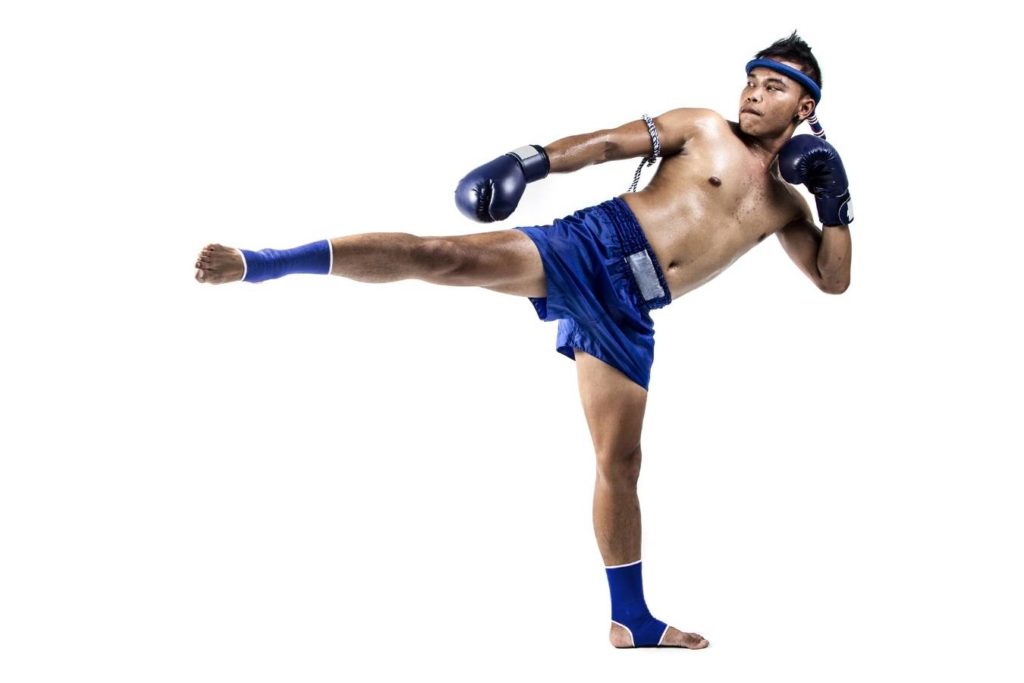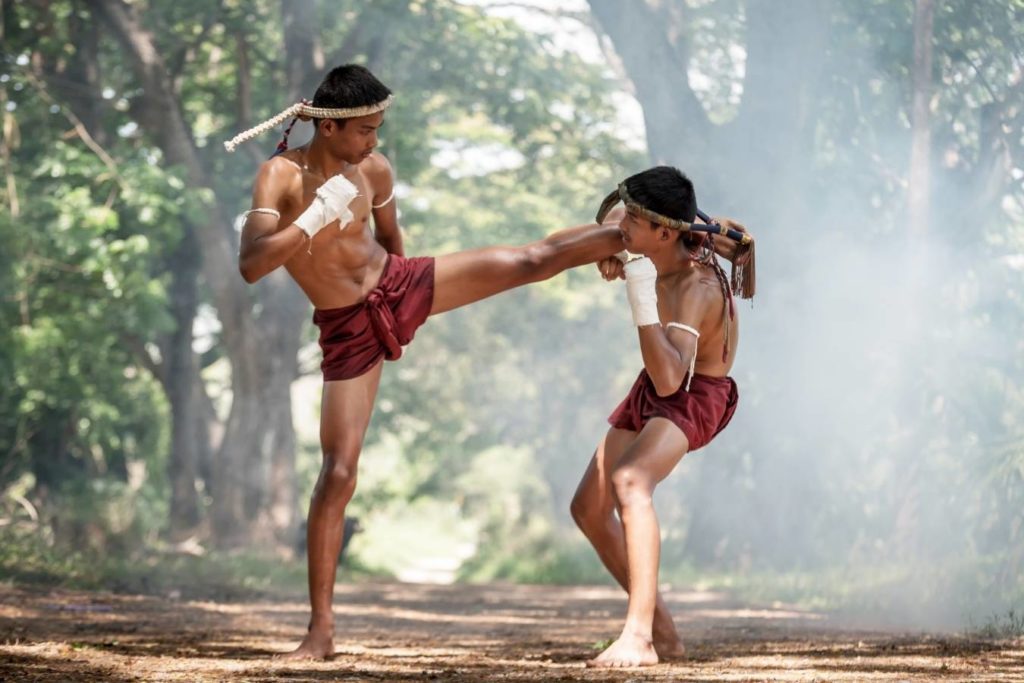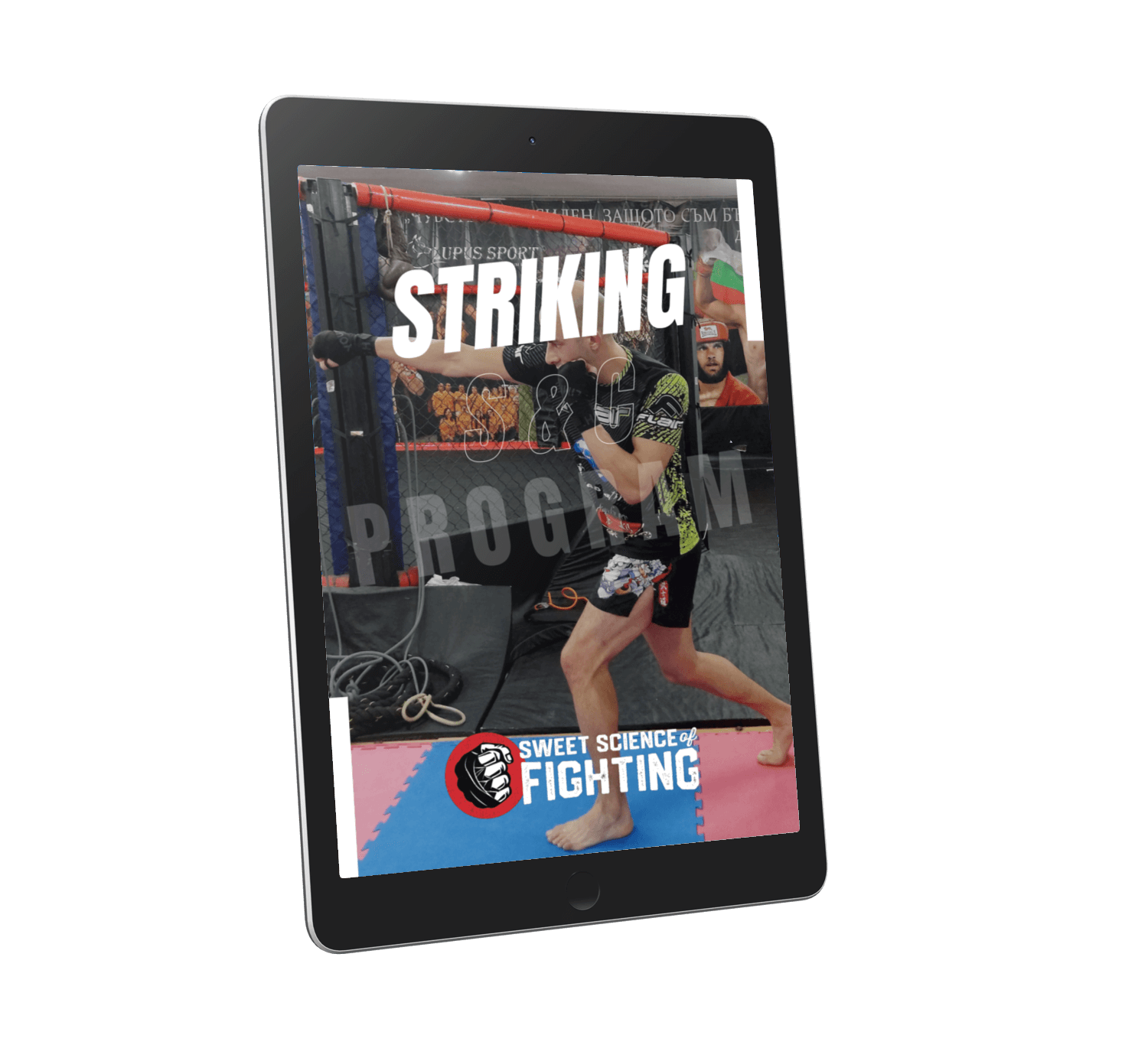Muay Thai is an art of long-held traditions. Dating back to at least the 16th century, it is no wonder that it is steeped in the history and culture of Thailand. Although the striking form progressed from the battlefield to the arena, it still maintains many rituals that are unique to the sport and practiced for hundreds of years.
One such custom is to wear a headband and set of armbands when entering the ring. This practice is also used in Western gyms to varying degrees. Still, some conflicting information is out there, so let’s take a deeper look at the importance and symbolism of these two essential pieces of a fighter’s attire.
Why Do Muay Thai Fighters Wear Armbands (Pra Jiad)?

The armband, known as the pra jiad, is worn on one or both arms of the fighter. This custom dates to before what we now call Muay Thai was considered a sport. The art of eight limbs is an evolution of a hand-to-hand combat system used to supplement the weapons used in warfare.
As warriors left home, bound for battle, they would be given a piece of their mother’s clothing which was tied around the wrist or arm. Typically, this was taken from a piece of cloth or a dress, called a sarong. This was done as a gesture of protection, good luck, and a safe return to the family.
As warfare evolved into combat sports, the armbands remained, instilling courage, retaining its symbolism of protection and good luck.
Discover The Little Known Secrets For Unlocking Devastating KO Power!
Heavy hands are built doing these things...
Typically blessed by monks, or a Ruesi (shaman), the pra jiad is considered sacred; it should be treated with the utmost respect and should never touch the floor or be stepped over; otherwise, bad luck will befall the fighter.
In Thailand, the same pair of pra jiad is worn by all the fighters in the gym. While some are still made from cloth or fabric, they are now typically made of nylon and are reserved solely for fights, being worn throughout both the ring entrance and the duration of the fight. They are not worn in training, nor do they denote ranking.
Straying from their traditional meaning, some Western gyms use armbands to highlight ranks, similar to belting systems seen in BJJ, ascribing a particular color to a specific experience level.
This is primarily a Western construct used to retain students and give them something to work towards. However, this marking system is not a traditional or current Thai system.
The only way to truly prove yourself is through competition, who you fight, and what titles you win. Although, understandably, those who only train recreationally and do not compete want to recognize their achievement, the use of ranked armbands goes against the true nature of the sport.
Why Do Muay Thai Fighters Wear Headbands (Mongkhon)?

The mongkhon, or mongkol, is the name of the headdress or headband worn by Thai fighters as they enter the ring and perform the ‘Wai Kru Ram Muay.’
This dance is an integral part of the ritualistic nature embedded in the country and its national sport. It honors the Kru (teacher) and pays respect to their family, the martial art, and the kingdom of Thailand.
Also considered are fighters that have gone before, to thank them for the path they have carved for those that come after. Following the dance, the fighter will return to his corner, where his coach awaits to pray over him and finally remove the headband.
A monk also blesses the mongkhon, thought to infuse the item with protective spells and powers. It cannot touch the floor, nor should the fighter touch it.
The headband is an honor earned by the fighter when his coach deems him worthy, gained through dedication and a certain experience level. One mongkhon is used for the entire gym and symbolizes the unique relationship between a kru and a nak muay (practitioner).
Like the pra jiad, the mongkhon can be traced back to a warring Siam (what is now Thailand), where warriors tied a piece of cloth around their heads before the battle. As they did so, they would chant affirmations to inspire courage, protection, and strength. This eventually developed into the headdress we know and see today.
Despite being initially associated with Buddhism, the mongkhon ios worn by fighters of all faiths is considered highly sacred, especially since it is worn on the head. Some are decorated in amulets for added protection and may even contain bone fragments of past revered teachers. It may stay in the same gym for many generations.
Some consider the Thai traditions too superstitious, but as nak muay farang (foreign practitioners) who greatly benefit from this ancient martial art, it is imperative to pay our due respects, whether or not we believe in it.
As Eastern martial arts become increasingly Westernized, Thai boxing is one of the few that has retained a large part of the tradition and culture from its country of origin, and efforts should be made to keep it as such.
Muay Thai is a sport of deep respect, honor, and courage. From the training to the interactions with others all the way to the ring, it is imbued with these integral characteristics. The pra jiad and mongkhon serve as visual symbols for the practices and values that have survived for centuries. May they see many more.


